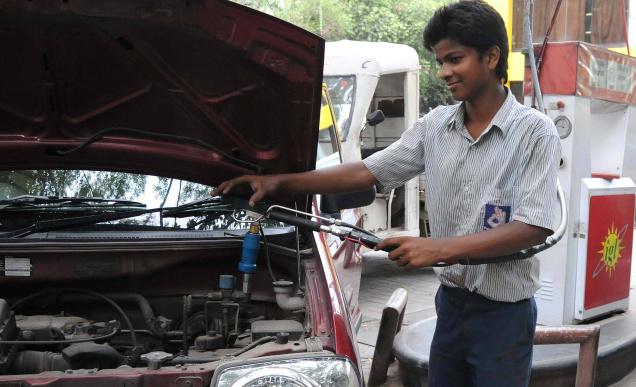 New Delhi, June 27;Biting the bullet, the government on Thursday approved near doubling of natural gas prices to $8.4 from April 1 next year, a move which will result in rise in power tariff, urea cost and CNG prices.
New Delhi, June 27;Biting the bullet, the government on Thursday approved near doubling of natural gas prices to $8.4 from April 1 next year, a move which will result in rise in power tariff, urea cost and CNG prices.
This will be the first revision in gas prices in 3 years.
The Cabinet Committee on Economic Affairs (CCEA) headed by Prime Minister Manmohan Singh approved Oil Ministry’s proposal to price all domestically produced natural gas as per a complex formula suggested by a panel headed by Prime Minister’s economic advisor C. Rangarajan, a top source told PTI.
The new price will apply uniformly to all producers, be it state-owned firms like Oil and Natural Gas Corp (ONGC) or private sector Reliance Industries. While it was previously said the new rates would apply to regulated or APM gas produced by firms like ONGC immediately, the pricing as per Rangarajan formula will come into effect from April 1, 2014, just when RIL’s KGD6 formula of $4.2/mmBtu runs out.
The Rangarajan formula would be applicable for five years.
The Rangarajan formula uses long-term and spot liquid gas (LNG) import contracts as well as international trading benchmarks to arrive at a competitive price for India.
While the Rangarajan panel had recommended revising domestic gas prices every month based, the Oil Ministry changed it to a quarterly revision.
Though the average of the two currently comes to $6.775, the price of gas in April next year when these guidelines will come into effect would be around $8.42 and over $10 in the following year. This is because Petronet’s deal with Qatar’s RasGas (India’s only functional long-term LNG contract) has a price-cap which lifts in January 2014, linking gas prices fully with crude.
While RIL’s KG-D6 gas price was fixed in 2007 at $4.205 per mmBtu for first five years of production, APM gas rates were last revised in June 2010 when prices were raised to $ 4.2 from $1.79. RIL began production from its eastern offshore KG-D6 field in April 2009.
The Administered Price Mechanism (APM) gas constitutes about 60 per cent of current domestic production of about 110 million standard cubic metres per day. RIL produces about 14 mmscmd.
The revision in prices was bitterly opposed by user ministries of power and fertiliser as well as opposition Left parties who saw the move as helping RIL.
The Oil Ministry has reasoned that the increase in gas price was needed to incentivise exploration while also resulting in higher revenues to the government.
Every dollar increase in gas price would result in $128.5 million (Rs 707 crore) in additional royalty and profit petroleum.
However, Power Ministry had opposed any hike saying electricity generation at any price of over USD 5 was economically unviable. Also, it had questioned the need to price the fuel in U.S. dollars as any depreciation in the Indian currency would further add to the strain on the consumers.
The variable cost of generating electricity would be around Rs. 5.40 per kilowatt hour (per unit) at new gas price, taking the total cost of generation to Rs. 6.40 per unit. This compares to current cost of Rs. 2.93 a unit.
The outgo for every $1 increase in gas price will be up to $1.138 billion (Rs 6,260 crore). Outgo for fertiliser sector due to $1 increase in gas price will be $ 406 million (Rs 2,233 crore).
Quoting a report of global consultants HIS-CERA, Macquarie Equities Research said India’s producible gas reserves could rise two-founds by 55-91 trillion cubic feet at gas price of $10-12/MMBtu.
“We believe India’s gas production could rise three-fold, alleviating the largest component of India’s current account deficit, which currently stands at 5.3 per cent,” it said.
